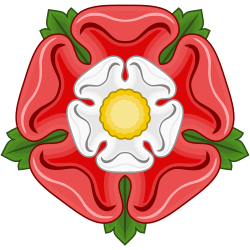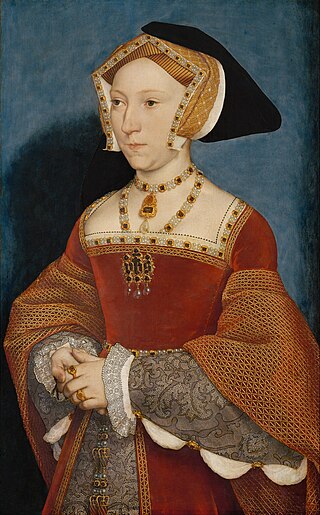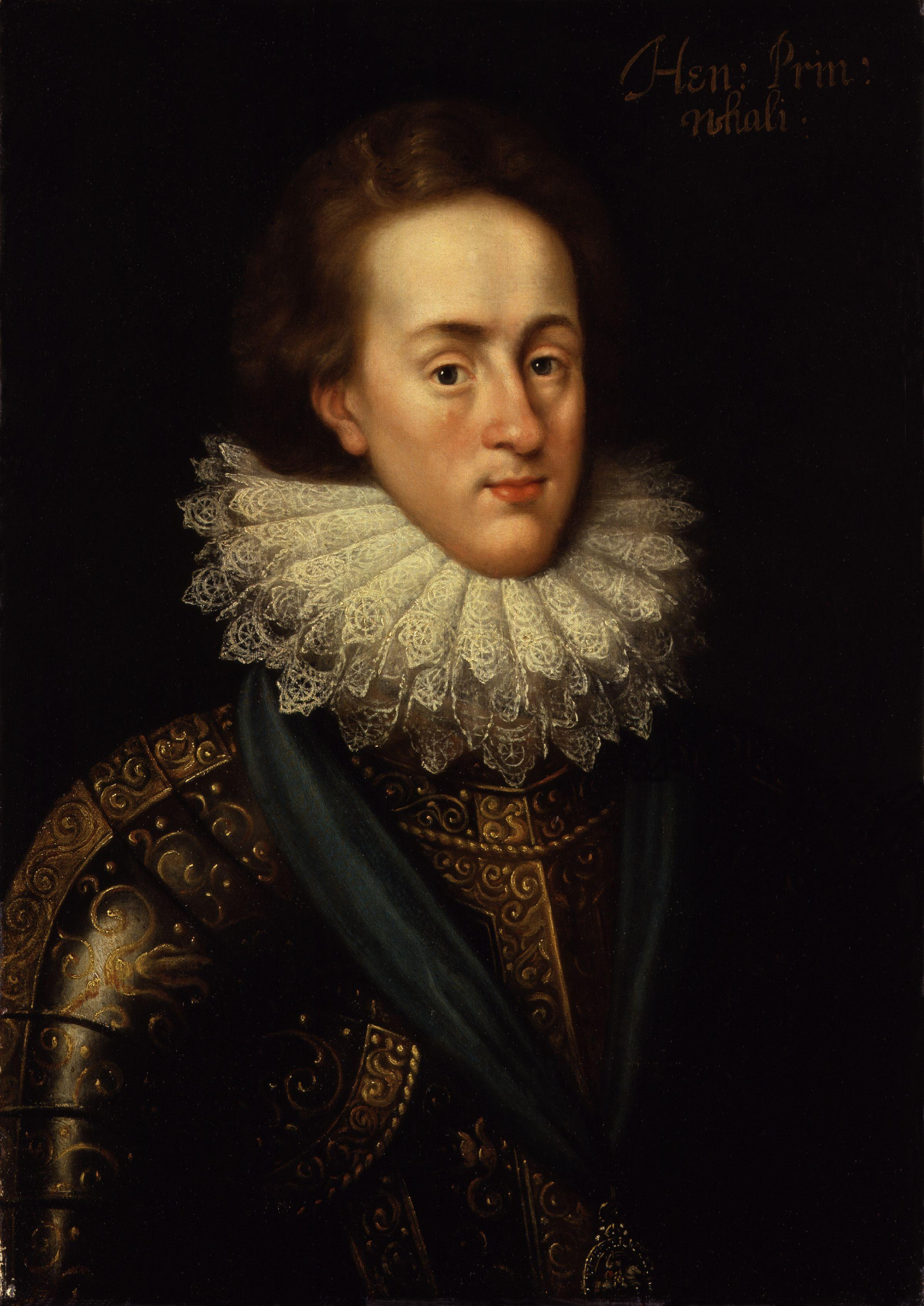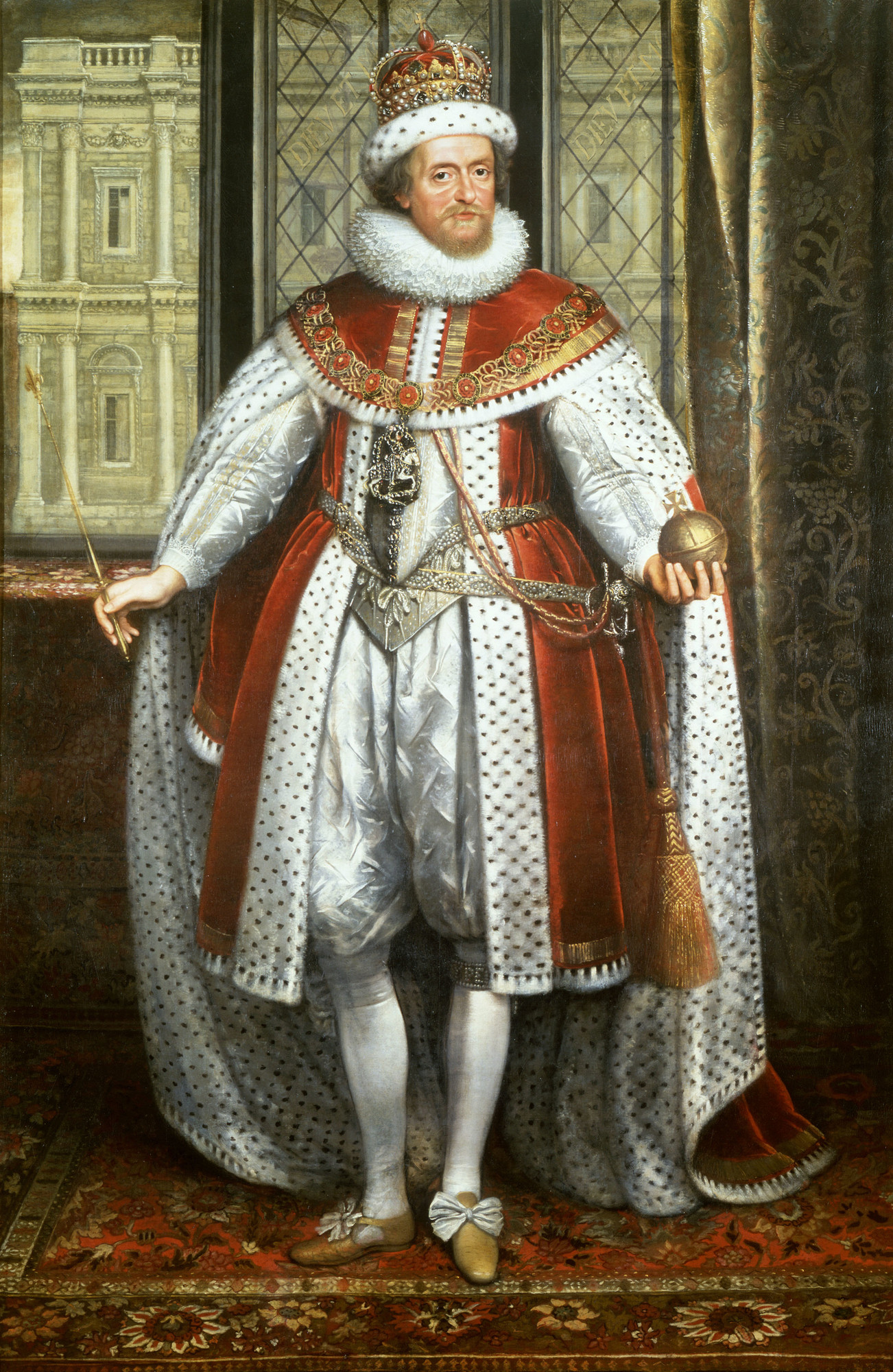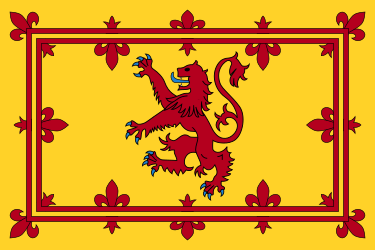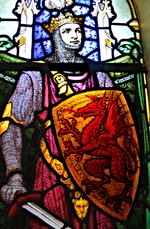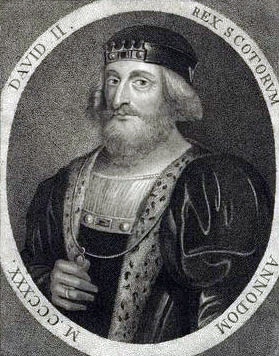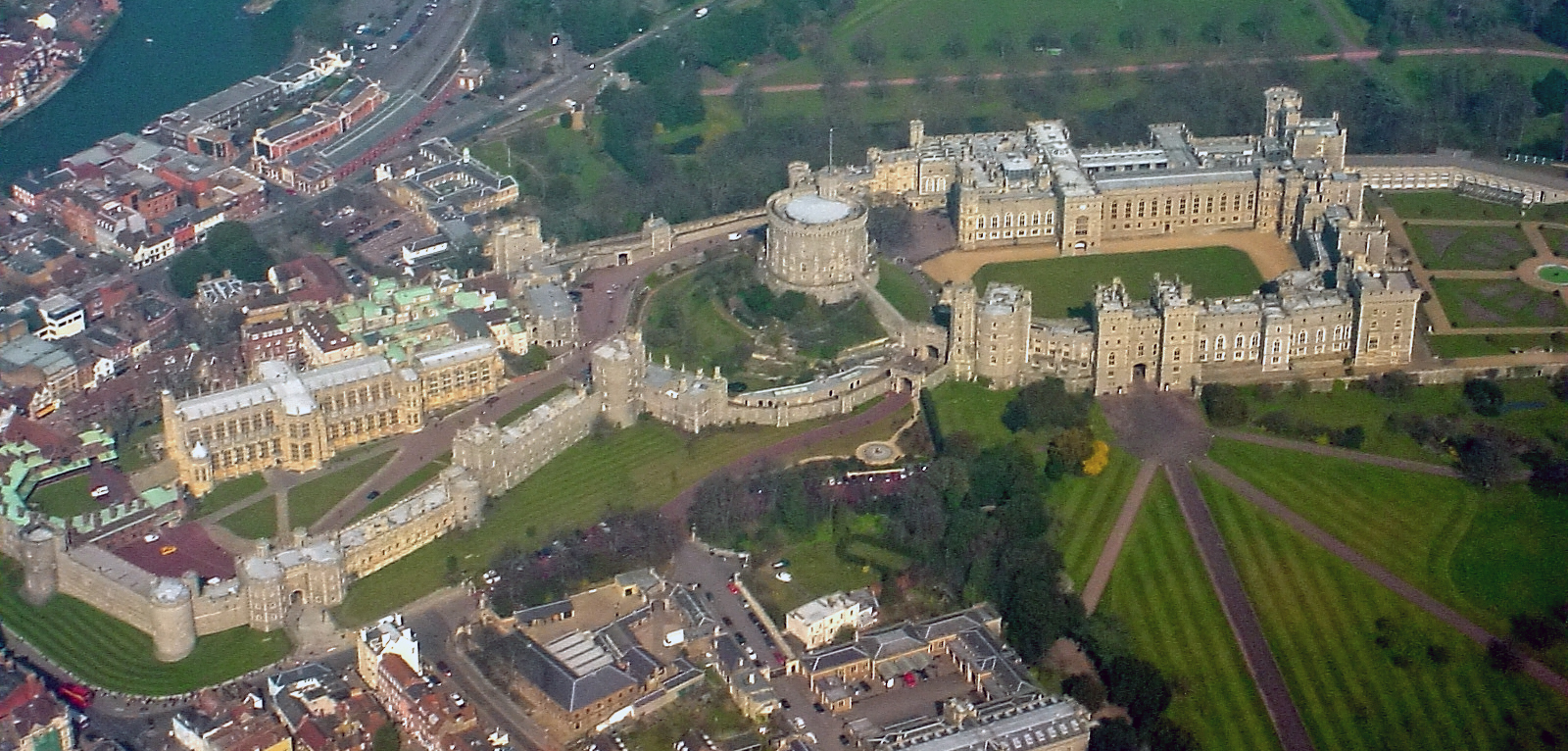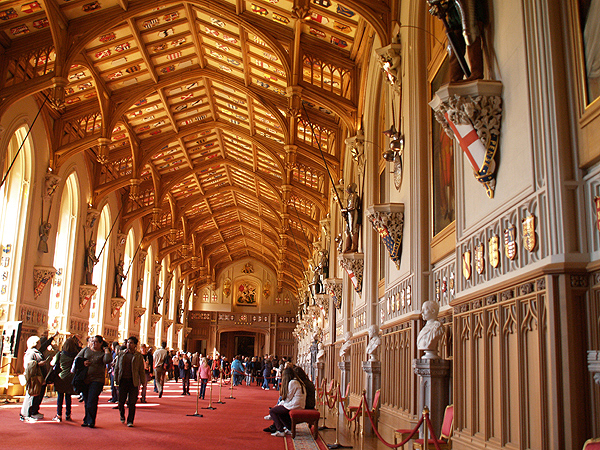by Susan Flantzer
- The Honorable Fergus Bowes-Lyon
- Timeline: September 1, 1915 – September 30, 1915
- A Note about German Titles
- Royals/Nobles/Peers Who Died in Action

Captain The Honorable Fergus Bowes-Lyon; Photo Credit – Daily Mail
Captain The Honorable Fergus Bowes-Lyon, the brother of Queen Elizabeth The Queen Mother and the uncle of Queen Elizabeth II, was killed in action on September 27, 1915 during the Battle of the Hohenzollern Redoubt, a phase of the Battle of Loos, in France. Fergus was the sixth of the ten children of Claude Bowes-Lyon, 14th Earl of Strathmore and Kinghorne and Cecilia Cavendish-Bentinck.
Fergus was born on April 18, 1889 at St. Paul’s Walden Bury, a Bowes-Lyon family estate in Hertfordshire, England. He was 12 years older than his sister Elizabeth and there were two siblings between them. Fergus was educated at Eton College in Eton, Berkshire, England, right across the River Thames from Windsor.
Fergus joined Black Watch (Royal Highland Regiment) 2nd Battalion as a second lieutenant in December of 1910, and in 1911 was sent to Punjab, India. He would have been very happy to remain in the military, but as a younger son of a peer, he knew he had to earn more money, so he took a job in the City of London. When World War I started in August of 1914, Fergus rejoined the Black Watch serving in the 8th Battalion.
On September 9, 1914, Fergus wrote to his mother that he and his fiancée Lady Christian Dawson-Damer, daughter of George Dawson-Damer, 5th Earl of Portarlington, intended to marry at once. The wedding was held on September 17, 1914, and then Fergus went off to join the 8th Battalion of the Black Watch (Royal Highland Regiment). Fergus and Christian had one child, a daughter, Rosemary Luisa Bowes-Lyon (July 18, 1915 – January 18, 1989), who was born two months before her father’s death. After Fergus’s death, his widow Lady Christian married Captain William Frederick Martin on June 4, 1919.

Lady Christian Norah Martin (née Dawson-Damer) by Bassano Ltd whole-plate glass negative, 6 April 1932 NPG x150177 © National Portrait Gallery, London
All four of the eldest surviving sons of the 14th Earl of Strathmore, saw action in World War I. Besides Fergus, his two elder surviving brothers were also in the British Army: Patrick and John (known as Jock) were both in the Black Watch. His next youngest brother, Michael, had just completed his first year at Magdalen College, Oxford, but he volunteered for the Scots Guard at once.
Fergus was sent to the Western Front in 1915, where the British Army and the French Army were attacking the German lines in Champagne and Artois in France to relieve pressure on their Russia allies. In August, Fergus had a brief visit home, and then returned to his battalion. British and French soldiers were preparing to attack on September 25 in the Battle of Loos, but the French were stopped by the Germans and the British, using poison gas for the first time, made some forward progress, but reinforcements were slow to come.

British infantry advancing through gas at Loos, September 25, 1915; Photo Credit – Wikipedia
On September 27, 1915, Fergus was ordered to remove a group of Germans who had infiltrated a trench by the Hohenzollern Redoubt, a defensive strongpoint of the German 6th Army, which the Black Watch had captured on September 26. Fergus and his men had been fighting continuously for the previous two days and nights. They had been relieved at 4 AM on September 27, and were preparing their breakfast when the new orders were received. Fergus led his men forward, but a German bomb exploded at his feet. His right leg was blown off and he suffered chest wounds. At the same time, bullets hit him in the chest and shoulder. Fergus was removed from the battlefield, and died a few hours later at the age of 26.
At the time of Fergus’ death, his brother John was also serving with the Black Watch. His younger brother Michael was at home recovering from wounds and his eldest brother Patrick had recently left the Black Watch after being wounded. His mother was severely affected by the loss of her son, and after his death became an invalid, withdrawn from public life until the marriage of her daughter Elizabeth to the future king in 1923. On April 23, 1923, as Elizabeth entered Westminster Abbey to be married to the future King George VI, she passed the Tomb of the Unknown Warrior, whose remains had been brought from France and buried in the Abbey floor three years earlier. Elizabeth laid her bouquet of white roses on it. No doubt she was thinking of her brother Fergus and all the other British soldiers who died in World War I.
Daily Mail: Give my love to Elizabeth: The Queen Mother’s brother – and a desperately poignant letter from the WWI trenches weeks before he died
Fergus was buried in a quarry at Vermelles, France. The quarry was adopted as a war cemetery, but the details of Fergus’ grave were lost, and so he was recorded among the names of the missing on the Loos Memorial. In November of 2011, Fergus’ grandson supplied family records to the Commonwealth War Graves Commission detailing Fergus’ original burial place, and showing that it had remained marked until the end of the war. In August of 2012, Fergus’ place of commemoration was moved to the Quarry Cemetery in Vermelles and is now marked by a headstone (photo below) inscribed with his personal details and the words “Buried near this spot” as the precise location of the grave is still not known.
Daily Record: Final resting place of Queen’s uncle discovered nearly a century after his death

Photo Credit – www.findagrave.com
British losses in the Battle of Loos were exceptionally high with 50,000 casualties (including at least 20,000 deaths). John Kipling, the 18 year old son of British author Rudyard Kipling also died in the Battle of Loos on the same day Fergus died. Kipling remembered his son and all the casualties of World War I in the following poem:
The Children
1914-1918
“The Honours of War” – A Diversity of Creatures
by Rudyard Kipling
These were our children who died for our land: they were dear in our sight.
We have only the memory left of their home-treasured saying and laughter.
The price of our loss shall be paid to our hands, not another’s hereafter.
Neither the Alien nor Priest shall decide on it. That is our right.
But who shall return us the children?
At the hour the Barbarian chose to disclose his pretences,
And raged against Man, they engaged, on the breasts that they bared for us,
The first felon-stroke of the sword he had long-time prepared for us –
Their bodies were all our defense while we wrought our defenses.
They bought us anew with their blood, forbearing to blame us,
Those hours which we had not made good when the Judgment o’ercame us.
They believed us and perished for it. Our statecraft, our learning
Delivered them bound to the Pit and alive to the burning
Whither they mirthfully hastened as jostling for honour –
Nor since her birth has our Earth seen such worth loosed upon her.
Nor was their agony brief, or once only imposed on them.
The wounded, the war-spent, the sick received no exemption:
Being cured they returned and endured and achieved our redemption,
Hopeless themselves of relief, till Death, marveling, closed on them.
That flesh we had nursed from the first in all cleanness was given
To corruption unveiled and assailed by the malice of Heaven –
By the heart-shaking jests of Decay where it lolled in the wires –
To be blanched or gay-painted by fumes – to be cindered by fires –
To be senselessly tossed and retossed in stale mutilation
From crater to crater. For that we shall take expiation.
But who shall return us our children?
*********************************************************
Timeline: September 1, 1915 – September 30, 1915
- September 1: Germany suspends unrestricted submarine warfare
- September 8: Nicholas II of Russia removes Grand Duke Nicholas Nicolaievich as Commander-in-Chief of the Russian Army, personally taking that position
- September 15 – November 4: Third Battle of Artois in Artois, France
- September 19: Germans occupy Vilnius (now the capital of Lithuania), Gorlice-Tarnów Offensive ends
- September 25 – 28: Battle of Loos in Loos, France , a major British offensive, fails
- September 25 – October 15: Battle of the Hohenzollern Redoubt in Auchy-les-Mines, France, a phase of the Battle of Loos
- September 25 – November 6: Second Battle of Champagne in Champagne, France
*********************************************************
Most of the royals who died in action during World War I were German. The German Empire consisted of 27 constituent states, most of them ruled by royal families. Scroll down to German Empire here to see what constituent states made up the German Empire. The constituent states retained their own governments, but had limited sovereignty. Some had their own armies, but the military forces of the smaller ones were put under Prussian control. In wartime, armies of all the constituent states would be controlled by the Prussian Army and the combined forces were known as the Imperial German Army. German titles may be used in Royals Who Died In Action below. Refer to Unofficial Royalty: Glossary of German Noble and Royal Titles.
24 British peers were also killed in World War I and they will be included in the list of those who died in action. In addition, more than 100 sons of peers also lost their lives, and those that can be verified will also be included.
*********************************************************
August 1915 – Royals/Nobles/Peers Who Died In Action
The list is in chronological order and does contain some who would be considered noble instead of royal. The links in the last bullet for each person is that person’s genealogical information from Leo’s Genealogics Website or to The Peerage website. If a person has a Wikipedia page, their name will be linked to that page.
- son of Frederick Cawley, 1st Baron Cawley and Elizabeth Smith
- born June 12, 1878
- Member of Parliament
- killed in action on September 23, 1915 during the Gallipoli Campaign, age 37
- had two brothers who also died during World War I
- http://www.thepeerage.com/p21216.htm#i212154
The Honorable Frank Bethell
- son of John Bethell, 1st Baron Bethell and Florence Wyles
- born May 18, 1896 in Essex, England
- unmarried
- killed in action on September 25, 1915, age 19
- http://www.thepeerage.com/p14114.htm#i141139
Andrew Stuart, Viscount Stuart
- eldest son of Andrew John Stuart, 6th Earl Castle Stewart and Emma Stevens
- born December 27, 1880
- killed in action on September 25, 1915 in France, age 34
- had a brother who also died during World War I
- http://www.thepeerage.com/p20745.htm#i207446
The Honorable Hercules Robinson
- son of Hercules Arthur Temple Robinson, 2nd Baron Rosmead and Hon. Edith Handcock
- born September 1, 1895
- died September 26, 1915 from wounds received in action, age 20
- http://www.thepeerage.com/p24177.htm#i241770
The Honorable Fergus Bowes-Lyon (see above)
- son of Claude Bowes-Lyon, 14th Earl of Strathmore and Kinghorne and Cecilia Cavendish-Bentinck
- brother of Her Majesty Queen Elizabeth The Queen Mother
- born April 18, 1889 at St. Paul’s Walden Bury, Hertfordshire, England
- married 1914 Lady Christian Norah Dawson-Damer, had one daughter
- killed in action on September 27, 1915 during the Battle of the Hohenzollern Redoubt in the Battle of Loos in France, age 26
The Honorable Cyril Ponsonby
- son of Edward Ponsonby, 8th Earl of Bessborough and Blanche Vere Guest
- born November 16, 1881
- married 1911 Rita Narcissa Longfield, had one son Arthur Ponsonby, 11th Earl of Bessborough
- killed in action on September 28, 1915 in France, age 33
- http://www.thepeerage.com/p8463.htm#i84621
The Honorable Maurice Browne
- son of Valentine Browne, 5th Earl of Kenmare and Hon. Elizabeth Baring
- born July 25, 1894
- killed in action on September 29, 1915, age 21
- http://thepeerage.com/p14962.htm#i149616

The Honorable Thomas Agar-Robartes
- son of Thomas Agar-Robartes, 6th Viscount Clifden of Gowran and 2nd Baron Robartes and Mary Dickenson
- born May 22, 1880 in London, England
- Member of Parliament
- unmarried
- killed in action at the Battle of Loos in France on September 30, 1915, age 35
- http://www.thepeerage.com/p22805.htm#i228050



